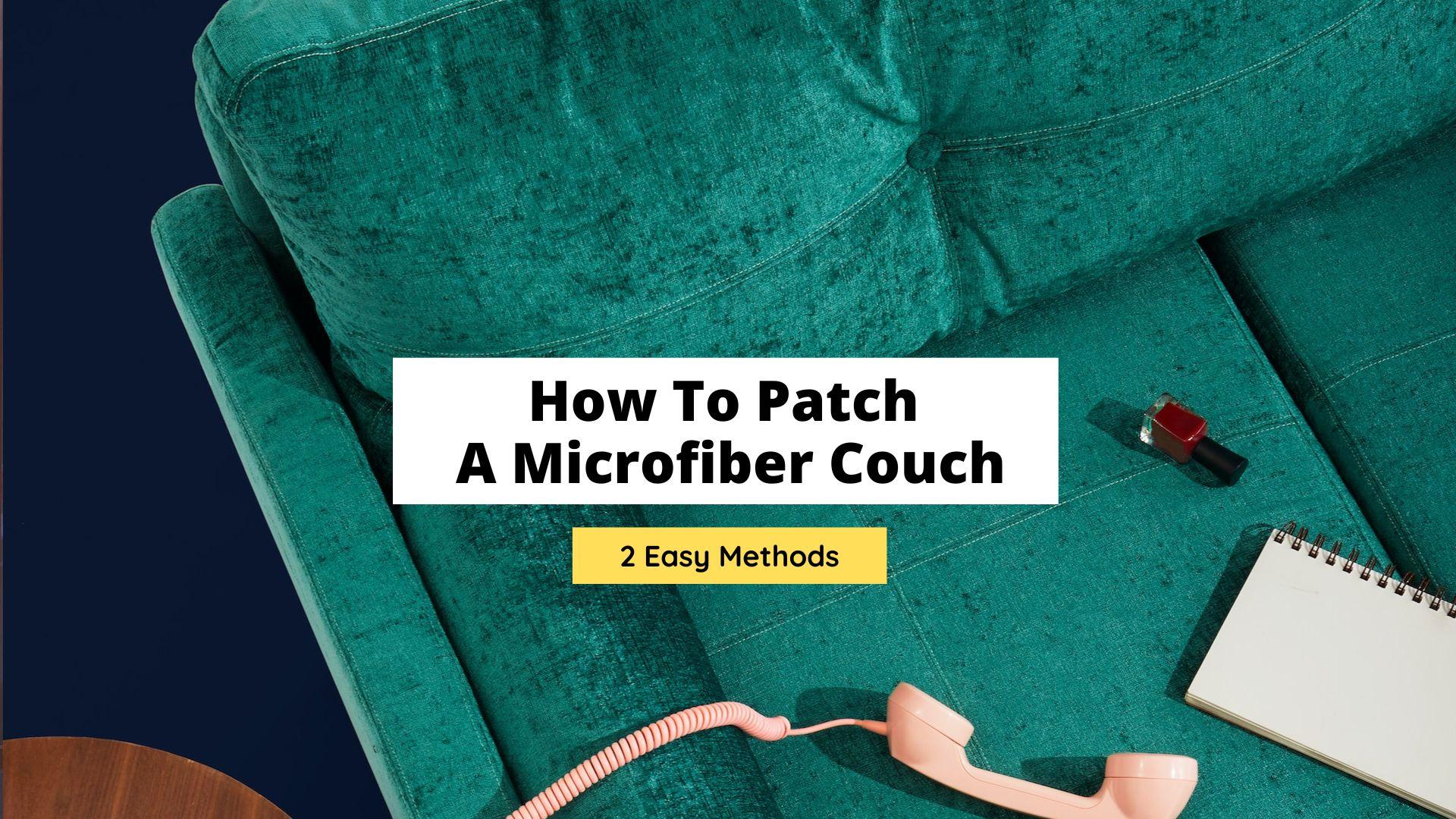How To Patch A Microfiber Couch: 2 Easy Methods

As durable and comfortable as a microfiber couch may be, accidents can and do happen that lead to damage to the couch.
With wear and tear, this makes sense and if you’re faced with the problem of having to fix a small patch or hole in your microfiber couch, it’s not as hard as it may seem.
Of course, it’s always a good idea to consult a professional when working with expensive furniture and especially if you’re unskilled at DIY projects.
However, sometimes, repairing something like a couch might be an expense we just can’t afford right now.
Luckily, there is something you can do to fix a hole or tear.
For minor damages, patching a microfiber couch involves an affordable and simple solution and this can save you the hassle of having to purchase a new couch.
To get your couch back to its proper condition again, follow this simple and easy guide that breaks down the process of repairing a microfiber couch.
Here’s what you need to do:
Table of Contents
Supplies You’ll Need
- Scissors
- Microfiber Material
- Glue/Sewing Needles
Steps For Patching A Microfiber Couch
Step 1: Get the correct material
Microfiber upholstery can be made from nylon or polyester.
For creating a seamless patch, you’ll want to make sure you know what your couch is made from to find a suitable material that is close to or identical to your couch.
This will ensure that it doesn’t stand out awkwardly and make the patch more visible.
You can simply pop on over to a fabric store and ask the consultants for help to find the accurate color and material.
If possible, consider contacting the manufacturer to see if you can get an extra piece of the fabric in your couch’s material.
Step 2: Cut the fabric
Once you have your material, you’ll want to measure the size of the hole so you can cut the fabric down to size. You can use a ruler or a measuring tape depending on the size.
Step 3: Use a fabric glue or sewing method
Now there are two methods to actually patching a microfiber couch.
The first method involves gluing the piece of fabric to the hole and the other involves sewing the missing piece using upholstery thread and a needle.
Fabric glue to patch the couch
If you’re using fabric glue, here’s what you need to do:
You’ll want to follow the instructions on the glue to make sure you’re using it correctly.
- Apply a small amount of fabric glue to the edge of the tear/hole, increase as needed, and then place your patch piece.
- Make sure the edges match, press down firmly, and hold for a few seconds.
- To make sure it dries fully and evenly, you can place a heavy object such as a book to hold it down in place.
- Depending on the instructions, you can leave it to dry completely before testing to see if the patch is secured.
Sewing the patch to the couch
Another method you can try is to sew the patch.
You’ll want to thread a needle with the matching upholstery cotton and then stitch the fabric to the torn area.
It’s best if you use a seamless stitch so that you’re not left with big stitches making it obvious the couch has been patched.
Additional Tips For Taking Care of A Microfiber Couch

With pets, kids, and daily use, a couch is bound to lose its quality but there are a few things you can do to maintain and prolong its condition.
Here are a few tips experts recommend that you might find helpful in the long run:
- Vacuum the couch regularly to keep it clean, remove surface buildup, and eliminate odors.
- Do a quick spot cleanup when messes occur. Leaving it to dry over time will make it harder to clean and remove the stain.
- Use a little bit of soap and water to clean any messes. This is usually a safe way to keep the couch clean every so often.
- To protect a microfiber couch, consider using a fabric protector that will keep it safe from strains.
- If your pets like to sit on the couch, consider throwing a thick blanket before they sit. This can stop them from tearing the fabric of the couch.
Final Thoughts
The result of patching a microfiber couch by yourself will often depend on the size, location, and skills.
Although these methods work best for small tears or holes, they can only be effective to a certain extent.
It may not always result in a perfect and flawless finish but it can be good enough especially if purchasing a new couch is not in the budget at the moment.
If you can’t get it right or maybe you’re not satisfied with the result, it might be a good idea to consult a professional.
Since they’re trained in making and fixing upholsteries, this should be an easy job for them.
Related Posts:




